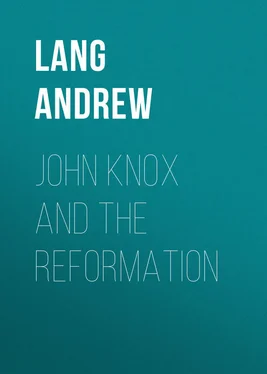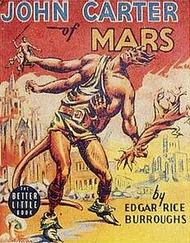Andrew Lang - John Knox and the Reformation
Здесь есть возможность читать онлайн «Andrew Lang - John Knox and the Reformation» — ознакомительный отрывок электронной книги совершенно бесплатно, а после прочтения отрывка купить полную версию. В некоторых случаях можно слушать аудио, скачать через торрент в формате fb2 и присутствует краткое содержание. Жанр: foreign_antique, foreign_prose, на английском языке. Описание произведения, (предисловие) а так же отзывы посетителей доступны на портале библиотеки ЛибКат.
- Название:John Knox and the Reformation
- Автор:
- Жанр:
- Год:неизвестен
- ISBN:нет данных
- Рейтинг книги:4 / 5. Голосов: 1
-
Избранное:Добавить в избранное
- Отзывы:
-
Ваша оценка:
- 80
- 1
- 2
- 3
- 4
- 5
John Knox and the Reformation: краткое содержание, описание и аннотация
Предлагаем к чтению аннотацию, описание, краткое содержание или предисловие (зависит от того, что написал сам автор книги «John Knox and the Reformation»). Если вы не нашли необходимую информацию о книге — напишите в комментариях, мы постараемся отыскать её.
John Knox and the Reformation — читать онлайн ознакомительный отрывок
Ниже представлен текст книги, разбитый по страницам. Система сохранения места последней прочитанной страницы, позволяет с удобством читать онлайн бесплатно книгу «John Knox and the Reformation», без необходимости каждый раз заново искать на чём Вы остановились. Поставьте закладку, и сможете в любой момент перейти на страницу, на которой закончили чтение.
Интервал:
Закладка:
The Catholic opponents of Knox naturally told scandalous anecdotes concerning his youth. These are destitute of evidence: about his youth we know nothing. It is a characteristic trait in him, and a fact much to his credit, that, though he is fond of expatiating about himself, he never makes confessions as to his earlier adventures. On his own years of the wild oat St. Augustine dilates in a style which still has charm: but Knox, if he sowed wild oats, is silent as the tomb. If he has anything to repent, it is not to the world that he confesses. About the days when he was “one of Baal’s shaven sort,” in his own phrase; when he was himself an “idolater,” and a priest of the altar: about the details of his conversion, Knox is mute. It is probable that, as a priest, he examined Lutheran books which were brought in with other merchandise from Holland; read the Bible for himself; and failed to find Purgatory, the Mass, the intercession of Saints, pardons, pilgrimages, and other accessories of mediæval religion in the Scriptures. 8 8 Beza, writing in 1580, says that study of St. Jerome and St. Augustine suggested his doubts. Icones Virorum Doctrina Simul ac Pietate Illustrium.
Knox had only to keep his eyes and ears open, to observe the clerical ignorance and corruption which resulted in great part from the Scottish habit of securing wealthy Church offices for ignorant, brutal, and licentious younger sons and bastards of noble families. This practice in Scotland was as odious to good Catholics, like Quentin Kennedy, Ninian Winzet, and, rather earlier, to Ferrerius, as to Knox himself. The prevalent anarchy caused by the long minorities of the Stuart kings, and by the interminable wars with England, and the difficulty of communications with Rome, had enabled the nobles thus to rob and deprave the Church, and so to provide themselves with moral reasons good for robbing her again; as a punishment for the iniquities which they had themselves introduced!
The almost incredible ignorance and profligacy of the higher Scottish clergy (with notable exceptions) in Knox’s youth, are not matter of controversy. They are as frankly recognised by contemporary Catholic as by Protestant authors. In the very year of the destruction of the monasteries (1559) the abuses are officially stated, as will be told later, by the last Scottish Provincial Council. Though three of the four Scottish universities were founded by Catholics, and the fourth, Edinburgh, had an endowment bequeathed by a Catholic, the clerical ignorance, in Knox’s time, was such that many priests could hardly read.
If more evidence is needed as to the debauched estate of the Scottish clergy, we obtain it from Mary of Guise, widow of James V., the Regent then governing Scotland for her child, Mary Stuart. The Queen, in December 1555, begged Pius IV. to permit her to levy a tax on her clergy, and to listen to what Cardinal Sermoneta would tell him about their need of reformation. The Cardinal drew a terrible sketch of the nefarious lives of “every kind of religious women” in Scotland. They go about with their illegal families and dower their daughters out of the revenues of the Church. The monks, too, have bloated wealth, while churches are allowed to fall into decay. “The only hope is in the Holy Father,” who should appoint an episcopal commission of visitation. For about forty years prelates have been alienating Church lands illegally, and churches and monasteries, by the avarice of those placed in charge, are crumbling to decay. Bishops are the chief dealers in cattle, fish, and hides, though we have, in fact, good evidence that their dealings were very limited, “sma’ sums.”
Not only the clergy, but the nobles and people were lawless. “They are more difficult to manage than ever,” writes Mary of Guise (Jan. 13, 1557). They are recalcitrant against law and order; every attempt at introducing these is denounced as an attack on their old laws: not that their laws are bad, but that they are badly administered. 9 9 Pollen, Papal Negotiations with Mary Stuart , 428-430, 522, 524, 528.
Scotland, in brief, had always been lawless, and for centuries had never been godly. She was untouched by the first fervour of the Franciscan and other religious revivals. Knox could not fail to see what was so patent: many books of the German reformers may have come in his way; no more was wanted than the preaching of George Wishart in 1543-45, to make him an irreconcilable foe of the doctrine as well as the discipline of his Church.
Knox had a sincerely religious nature, and a conviction that he was, more than most men, though a sinner, in close touch with Him “in whom we live and move and have our being.” We ask ourselves, had Knox, as “a priest of the altar,” never known the deep emotions, which tongue may not utter, that the ceremonies and services of his Church so naturally awaken in the soul of the believer? These emotions, if they were in his experience, he never remembered tenderly, he flung them from him without regret; not regarding them even as dreams, beautiful and dear, but misleading, that came through the Ivory Gate. To Knox’s opponent in controversy, Quentin Kennedy, the mass was “the blessed Sacrament of the Altar.. which is one of the chief Sacraments whereby our Saviour, for the salvation of mankind, has appointed the fruit of His death and passion to be daily renewed and applied.” In this traditional view there is nothing unedifying, nothing injurious to the Christian life. But to Knox the wafer is an idol, a god “of water and meal,” “but a feeble and miserable god,” that can be destroyed “by a bold and puissant mouse.” “Rats and mice will desire no better dinner than white round gods enough.” 10 10 Knox , vi. 172, 173.
The Reformer and the Catholic take up the question “by different handles”; and the Catholic grounds his defence on a text about Melchizedek! To Knox the mass is the symbol of all that he justly detested in the degraded Church as she then was in Scotland, “that horrible harlot with her filthiness.” To Kennedy it was what we have seen.
Knox speaks of having been in “the puddle of papistry.” He loathes what he has left behind him, and it is natural to guess that, in his first years of priesthood, his religious nature slept; that he became a priest and notary merely that he “might eat a morsel of bread”; and that real “conviction” never was his till his studies of Protestant controversialists, and also of St. Augustine and the Bible, and the teaching of Wishart, raised him from a mundane life. Then he awoke to a passionate horror and hatred of his old routine of “mumbled masses,” of “rites of human invention,” whereof he had never known the poetry and the mystic charm. Had he known them, he could not have so denied and detested them. On the other hand, when once he had embraced the new ideas, Knox’s faith in them, or in his own form of them, was firm as the round world, made so fast that it cannot be moved. He had now a pou sto , whence he could, and did, move the world of human affairs. A faith not to be shaken, and enormous energy were the essential attributes of the Reformer. It is almost impossible to find an instance in which Knox allows that he may have been mistaken: d’avoir toujours raison was his claim. If he admits an error in details, it is usually an error of insufficient severity. He did not attack Northumberland or Mary Stuart with adequate violence; he did not disapprove enough of our prayer book; he did not hand a heretic over to the magistrates.
While acting as a priest and notary, between 1540, at latest, and 1543, Knox was engaged as private tutor to a boy named Brounefield, son of Brounefield of Greenlaw, and to other lads, spoken of as his “bairns.” In this profession of tutor he continued till 1547.
Читать дальшеИнтервал:
Закладка:
Похожие книги на «John Knox and the Reformation»
Представляем Вашему вниманию похожие книги на «John Knox and the Reformation» списком для выбора. Мы отобрали схожую по названию и смыслу литературу в надежде предоставить читателям больше вариантов отыскать новые, интересные, ещё непрочитанные произведения.
Обсуждение, отзывы о книге «John Knox and the Reformation» и просто собственные мнения читателей. Оставьте ваши комментарии, напишите, что Вы думаете о произведении, его смысле или главных героях. Укажите что конкретно понравилось, а что нет, и почему Вы так считаете.











